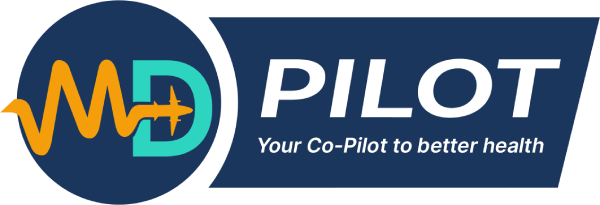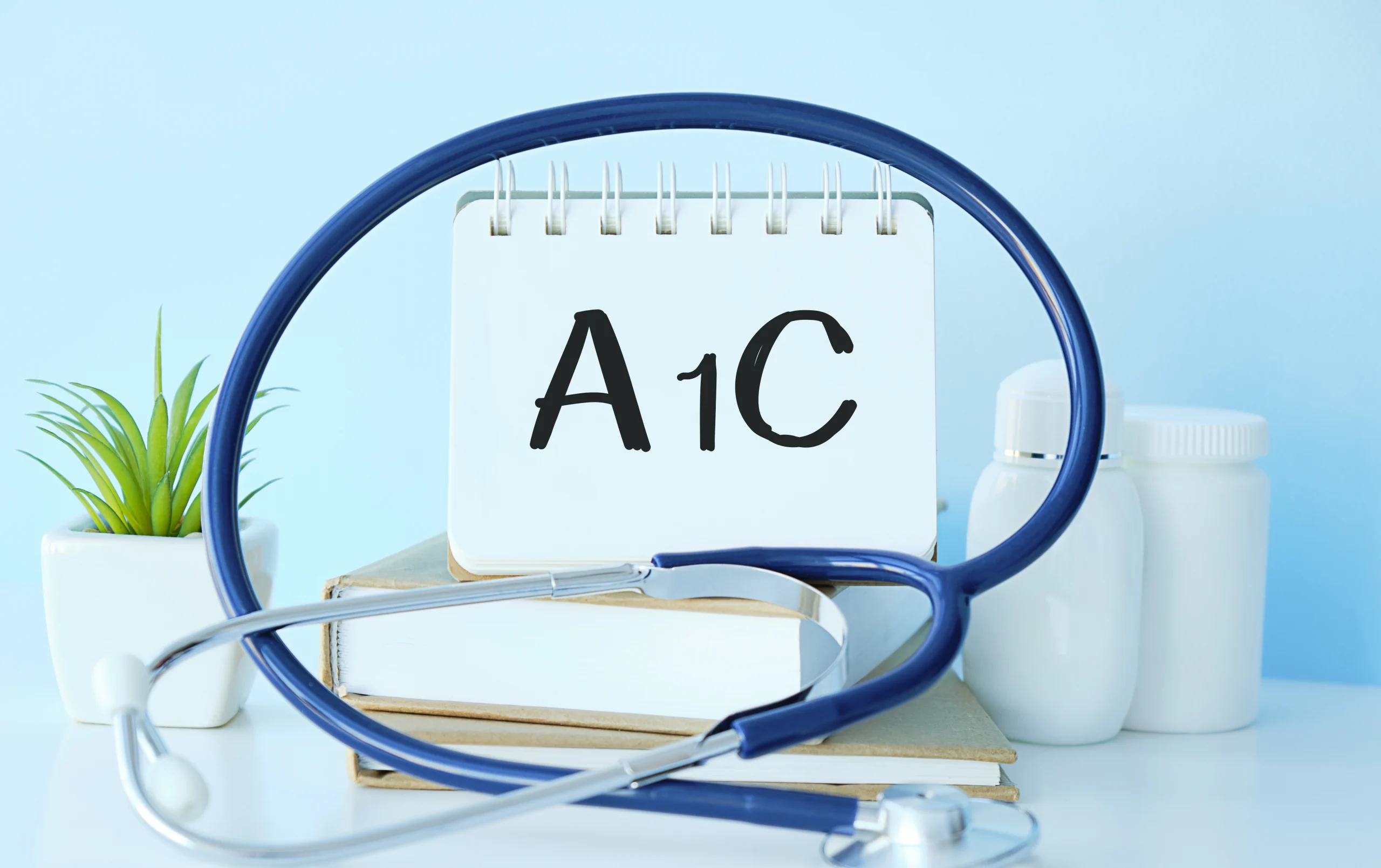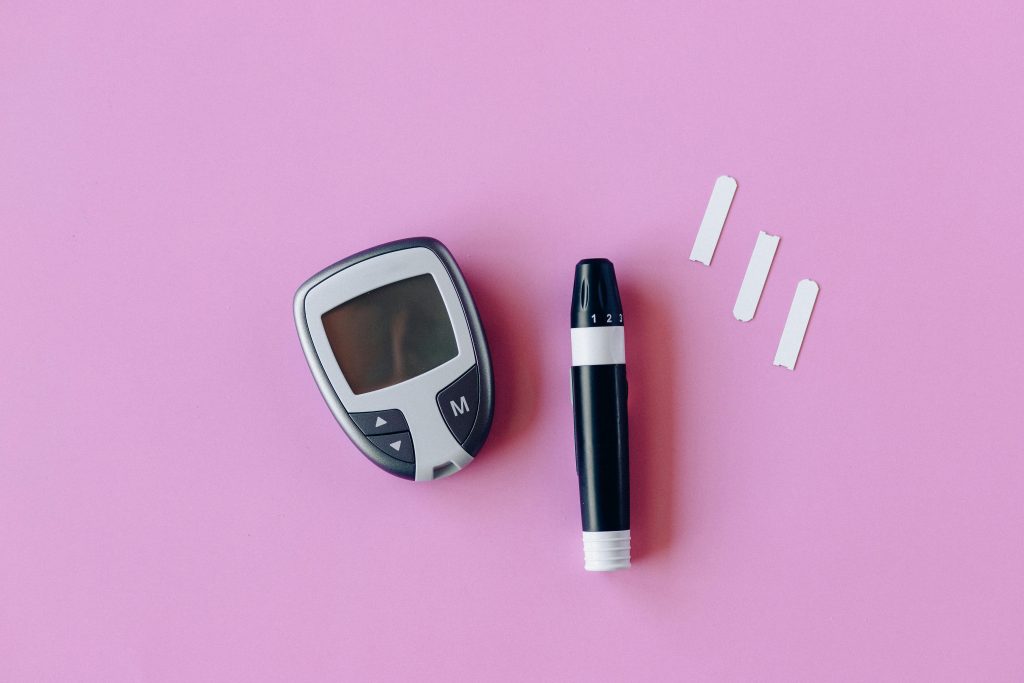Table Of Contents
-
Key Highlights
- What is A1C? Understanding the Basics
- How to Convert A1C to Blood Sugar: The Science & Latest 2024 Formula
-
A1C to Blood Sugar Conversion Table (mg/dL & mmol/L)
-
Interactive A1C to Blood Sugar Calculator
- Limitations and Accuracy: How Reliable Are A1C-to-Glucose Conversions?
- Interpreting Your A1C and Average Glucose Results
- Beyond the Chart: CGM, Individual Factors, and Clinical Advice
- Download, Print, and Calculate: Tools & Resources
-
Frequently Asked Questions
-
Conclusion
-
References and Sources
Key Highlights
- The A1C test provides a 3-month average blood sugar reading and serves as the clinical standard for diabetes diagnosis and management
- Updated 2024 formulas from Norris & Lang research have improved the accuracy of A1C-to-glucose calculations for better clinical decision-making
- Complete conversion charts include both mg/dL (U.S.) and mmol/L (international) measurements with confidence intervals
- Individual A1C readings may vary based on biology, health conditions, and device calibration—population averages don’t always apply
- Continuous glucose monitoring (CGM) data provides more detailed insights than A1C conversions alone
- Printable charts and interactive calculators make tracking diabetes management goals more accessible
- Understanding limitations helps you use conversion data effectively with your healthcare provider
What is A1C? Understanding the Basics
The A1C test, also known as hemoglobin A1C or HbA1c, measures the percentage of your red blood cells that have glucose attached to them. Since red blood cells live for approximately 120 days, this test provides a reliable picture of your average blood sugar levels over the past 2-3 months.
How A1C Works in Your Body
When glucose circulates in your bloodstream, it naturally binds to hemoglobin proteins in your red blood cells through a process called glycation. The higher your blood sugar levels, the more glucose attaches to your hemoglobin. This process is irreversible, which means once glucose binds to hemoglobin, it stays there for the entire lifespan of that red blood cell.
A1C Target Ranges and Diagnosis
According to the American Diabetes Association’s 2024 standards, A1C levels are interpreted as follows:
- Normal: Below 5.7%
- Prediabetes: 5.7% to 6.4%
- Diabetes: 6.5% or higher
- Treatment Goal: Generally below 7.0% for most adults with diabetes
Factors That Influence A1C Results
Several conditions can affect A1C accuracy, including anemia, kidney disease, certain hemoglobin variants, and recent blood transfusions. Understanding these limitations helps you interpret results more effectively with your healthcare provider.
How to Convert A1C to Blood Sugar: The Science & Latest 2024 Formula
The Updated ADA Formula
The most widely accepted formula for converting A1C to estimated average glucose (eAG) comes from the American Diabetes Association. The current formula is:
eAG (mg/dL) = (28.7 × A1C%) – 46.7
eAG (mmol/L) = (1.59 × A1C%) – 2.59
2024 Research Updates: Norris & Lang Corrections
Recent research by Norris & Lang (2024) has identified important corrections to earlier conversion formulas, particularly for pediatric populations and individuals with certain health conditions. These updates improve clinical accuracy by accounting for:
- Age-related differences in red blood cell turnover
- Ethnic variations in hemoglobin characteristics
- Individual biological factors affecting glucose binding
Practical Conversion Example
Let’s calculate the estimated average glucose for someone with an A1C of 7.5%:
- mg/dL calculation: (28.7 × 7.5) – 46.7 = 215.25 – 46.7 = 168.6 mg/dL
- mmol/L calculation: (1.59 × 7.5) – 2.59 = 11.93 – 2.59 = 9.3 mmol/L
 Important Note:
Important Note:
These calculations provide population-based estimates. Individual results may vary by ±30 mg/dL (±1.7 mmol/L) due to biological factors, making clinical context essential for interpretation.
A1C to Blood Sugar Conversion Table (mg/dL & mmol/L)
| A1C (%) | Estimated Average Glucose mg/dL | Estimated Average Glucose mmol/L | Confidence Interval mg/dL | Classification |
|---|---|---|---|---|
| 5.0 | 97 | 5.4 | 76-120 | Normal |
| 5.5 | 111 | 6.2 | 88-137 | Normal |
| 6.0 | 126 | 7.0 | 100-152 | Prediabetes |
| 6.5 | 140 | 7.8 | 112-169 | Diabetes Threshold |
| 7.0 | 154 | 8.6 | 123-185 | Diabetes |
| 7.5 | 169 | 9.4 | 135-200 | Diabetes |
| 8.0 | 183 | 10.2 | 147-217 | Diabetes |
| 8.5 | 197 | 10.9 | 158-233 | Diabetes |
| 9.0 | 212 | 11.8 | 170-249 | Diabetes |
| 10.0 | 240 | 13.4 | 193-282 | Diabetes |
| 11.0 | 269 | 14.9 | 217-314 | Diabetes |
| 12.0 | 298 | 16.5 | 240-347 | Diabetes |
Source: American Diabetes Association 2024 Standards of Care, with confidence intervals showing the range where 95% of individual results typically fall.
Interactive A1C to Blood Sugar Calculator
Calculate Your Estimated Average Glucose
Enter your A1C percentage to calculate your estimated average glucose in both mg/dL and mmol/L:
Limitations and Accuracy: How Reliable Are A1C-to-Glucose Conversions?
Understanding Statistical Confidence Intervals
A1C conversion formulas are derived from large population studies, but individual biology creates natural variation. The confidence intervals in our conversion chart show that for any given A1C percentage, 95% of people will have actual average glucose levels within the specified range.
Factors That Affect Conversion Accuracy
Several medical conditions and individual factors can impact how accurately A1C converts to average blood sugar:
- Anemia and Blood Disorders: Conditions affecting red blood cell count or lifespan can alter A1C results
- Kidney Disease: May affect both A1C and glucose metabolism
- Hemoglobin Variants: Genetic differences in hemoglobin structure can impact glucose binding
- Recent Blood Loss: Can temporarily affect the ratio of older to newer red blood cells
- Age and Ethnicity: May influence red blood cell turnover rates and glucose binding patterns
When A1C and Glucose Meters Don't Match
It’s common for daily glucose meter readings to seem inconsistent with A1C-derived estimates. This happens because:
- Glucose meters capture specific moments, while A1C reflects continuous exposure
- Testing patterns may not represent full 24-hour glucose profiles
- Dawn phenomenon and post-meal spikes might be missed in routine testing
- Meter accuracy can vary by ±15% even when functioning properly
Interpreting Your A1C and Average Glucose Results
Setting Personalized A1C Goals
While the general target for adults with diabetes is below 7.0%, your individual goal may differ based on:
- Age and Life Expectancy: Older adults may have higher target ranges
- Diabetes Complications: History of severe hypoglycemia may warrant higher targets
- Other Health Conditions: Cardiovascular disease, kidney problems, or other conditions influence goals
- Individual Circumstances: Pregnancy, work requirements, or lifestyle factors
Using Conversion Data for Treatment Decisions
Healthcare providers use A1C-to-glucose conversions to:
- Adjust medication dosing and timing
- Identify patterns in blood sugar control
- Set realistic targets for daily glucose management
- Monitor long-term treatment effectiveness
Success Story: Practical Application
Consider Sarah, whose A1C dropped from 8.2% to 6.8% over six months. Using our conversion chart:
- Initial A1C 8.2%: ~190 mg/dL average glucose
- Final A1C 6.8%: ~149 mg/dL average glucose
- Improvement: 41 mg/dL reduction in average glucose
This data helped Sarah and her doctor understand that her lifestyle changes and medication adjustments were working effectively.
Beyond the Chart: CGM, Individual Factors, and Clinical Advice
How Continuous Glucose Monitoring Changes the Picture
Continuous glucose monitors provide real-time data that reveals patterns invisible to A1C conversions alone. CGM data shows:
- Time in Range: Percentage of time glucose stays within target levels
- Glucose Variability: How much blood sugar fluctuates throughout the day
- Pattern Recognition: Dawn phenomenon, post-meal spikes, and overnight trends
- Hypoglycemia Detection: Low blood sugar episodes that might not affect A1C significantly
CGM vs. A1C: Complementary Tools
Research shows that two people with identical A1C values can have vastly different CGM patterns. For example:
- Person A: Steady glucose levels averaging 154 mg/dL (A1C ~7.0%)
- Person B: High variability with frequent highs and lows averaging 154 mg/dL (A1C ~7.0%)
The A1C conversion suggests similar control, but Person B faces higher risks from glucose variability and hypoglycemia.
Ethnic and Age Considerations
Recent research highlights important differences in A1C accuracy across populations:
- African Americans: May have higher A1C levels for the same average glucose
- Older Adults: Red blood cell turnover changes can affect A1C interpretation
- Children and Adolescents: Growth and development influence glucose metabolism patterns
Download, Print, and Calculate: Tools & Resources
Professional Resources for Healthcare Providers
Healthcare professionals can access additional tools through:
- ADA Professional Resources: Updated conversion tables and clinical guidelines
- Clinical Decision Support: Electronic health record integration tools
- Patient Education Materials: Printable handouts and visual aids
Patient-Friendly Tools
For individuals managing diabetes, helpful resources include:
- Smartphone Apps: Diabetes management apps with built-in A1C calculators
- Printable Charts: Refrigerator-friendly reference cards
- Online Calculators: Professional diabetes organization websites
- CGM Integration: Devices that automatically calculate time-in-range metrics
Creating Your Personal Tracking System
Effective diabetes management combines multiple data sources:
- Regular A1C testing (every 3-6 months)
- Daily glucose monitoring or CGM data
- Food and activity logging
- Medication tracking and timing
- Symptom and mood documentation
Frequently Asked Questions
The most widely accepted formula is from the American Diabetes Association: eAG (mg/dL) = (28.7 × A1C%) – 46.7. This formula is based on extensive research and provides the best population-level estimates, though individual results may vary by ±30 mg/dL due to biological factors.
A1C conversion charts provide population-based estimates with confidence intervals showing where 95% of individual results typically fall. However, personal factors like anemia, kidney disease, hemoglobin variants, and ethnic background can affect accuracy. The conversion works best as a general guide rather than a precise individual predictor.
Normal A1C levels are below 5.7% for adults without diabetes. This corresponds to an estimated average glucose of about 117 mg/dL (6.5 mmol/L) or lower. A1C levels between 5.7-6.4% indicate prediabetes, while 6.5% or higher suggests diabetes diagnosis.
Yes, the conversion formula for mmol/L is: eAG (mmol/L) = (1.59 × A1C%) – 2.59. For example, an A1C of 7.0% converts to approximately 8.6 mmol/L. Our conversion chart includes both mg/dL and mmol/L values for international accessibility.
CGMs provide more detailed glucose data than A1C conversions alone, showing patterns like time-in-range, glucose variability, and hypoglycemic episodes. Two people with identical A1C values can have very different CGM patterns, making CGM data valuable for treatment optimization beyond what A1C conversions reveal.
Several factors cause this discrepancy: glucose meters capture specific moments while A1C reflects 24/7 exposure, testing patterns may miss post-meal spikes or overnight changes, meter accuracy varies by ±15%, and individual biological factors affect both measurements. CGM data often helps explain these differences.
The American Diabetes Association recommends A1C testing every 3-6 months for people with diabetes, depending on treatment stability and glucose control. Those meeting treatment goals with stable control may test every 6 months, while those with changing treatments or unmet goals should test every 3 months.
The 2024 Norris & Lang research corrected previous formulas to improve clinical accuracy, particularly for pediatric populations and individuals with certain health conditions. These updates account for age-related differences in red blood cell turnover, ethnic variations in hemoglobin characteristics, and individual biological factors affecting glucose binding.
Conclusion
Understanding A1C to blood sugar conversion is a powerful tool in your diabetes management toolkit, but it’s most effective when used alongside other monitoring methods and professional medical guidance. The conversion charts and formulas we’ve explored provide valuable insights into your long-term glucose control, helping you make informed decisions about diet, exercise, and treatment adjustments.
Remember that while these conversions offer important population-based estimates, your individual biology makes you unique. Factors like age, ethnicity, health conditions, and red blood cell characteristics can influence how accurately conversions apply to your specific situation. This is why combining A1C data with continuous glucose monitoring, regular testing, and ongoing communication with your healthcare provider creates the most complete picture of your diabetes management.
Whether you’re using our interactive calculator, referencing the printable conversion chart, or discussing results with your medical team, these tools help translate complex medical data into actionable insights for better health outcomes.
Take the next step: Print our conversion chart for easy reference, bookmark this page for future use, and discuss your A1C targets with your healthcare provider to create a personalized diabetes management plan that works for your lifestyle and health goals.
References and Sources
- American Diabetes Association. Standards of Medical Care in Diabetes—2024. Diabetes Care. 2024;47(Supplement_1).
- University of Iowa Pediatrics. More Accurate Conversion of Average Blood Glucose to Hemoglobin A1c. 2024.
- Michigan State University. A1C Calculator Conversion. Combat Veterans Social Work Program.
- Centers for Disease Control and Prevention. Managing Blood Sugar. CDC Diabetes Management Guidelines.
- StatPearls Publishing. Hemoglobin A1c. StatPearls. Updated 2024.
- Healthline Media. A1C to Blood Sugar Conversion. Medical Review and Patient Education.
- American Diabetes Association. eAG/A1C Conversion Calculator. Professional Resources.
- Norris, J.M., & Lang, H.F. Updated A1C Conversion Formula. Diabetes Care. 2024.
- American Diabetes Association. All About A1C. Patient Education Resources.
Disclaimer:
The information provided on MD-Pilot is for educational and informational purposes only. It is not intended as a substitute for professional medical advice, diagnosis, or treatment. Always seek the advice of your physician or other qualified healthcare provider with any questions you may have regarding a medical condition. Never disregard professional medical advice or delay in seeking it because of something you have read on this website.
Recomended Articles
View AllWeekly Health Intel
Get evidence-based health tips, latest research, and exclusive guides delivered weekly




